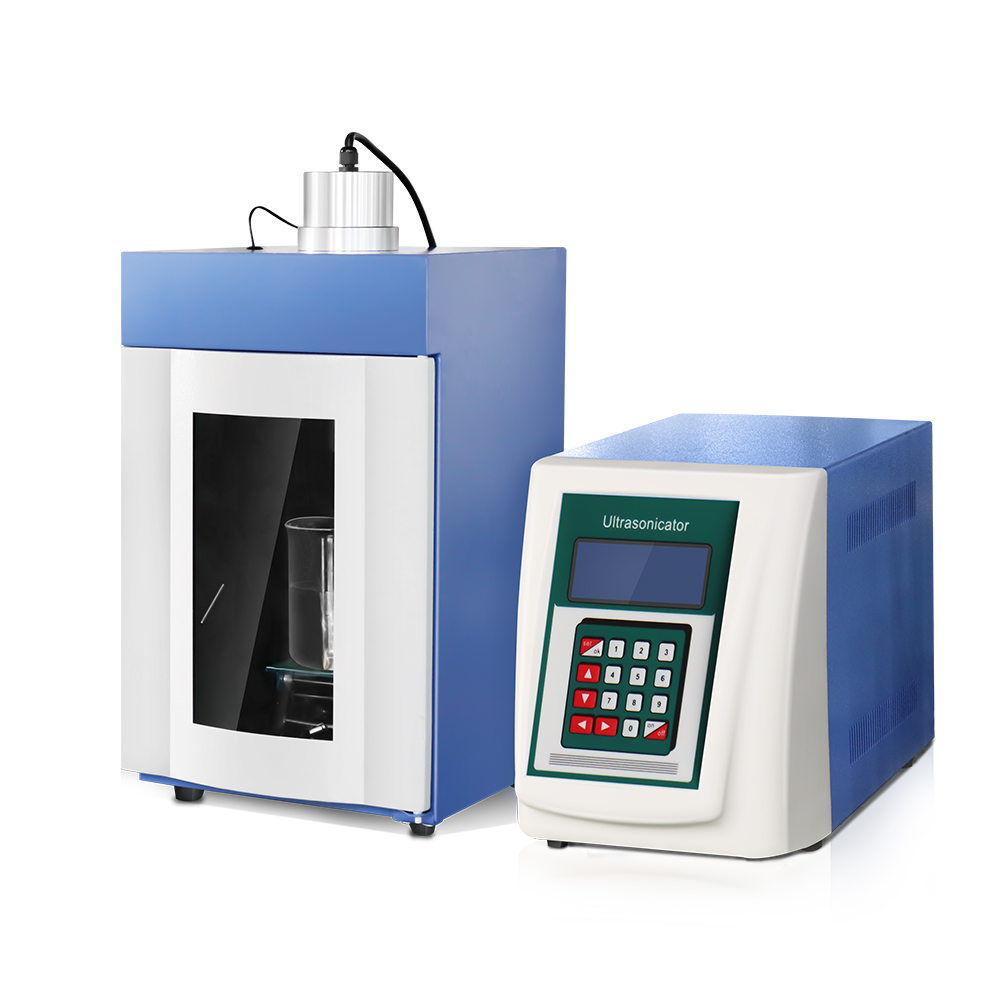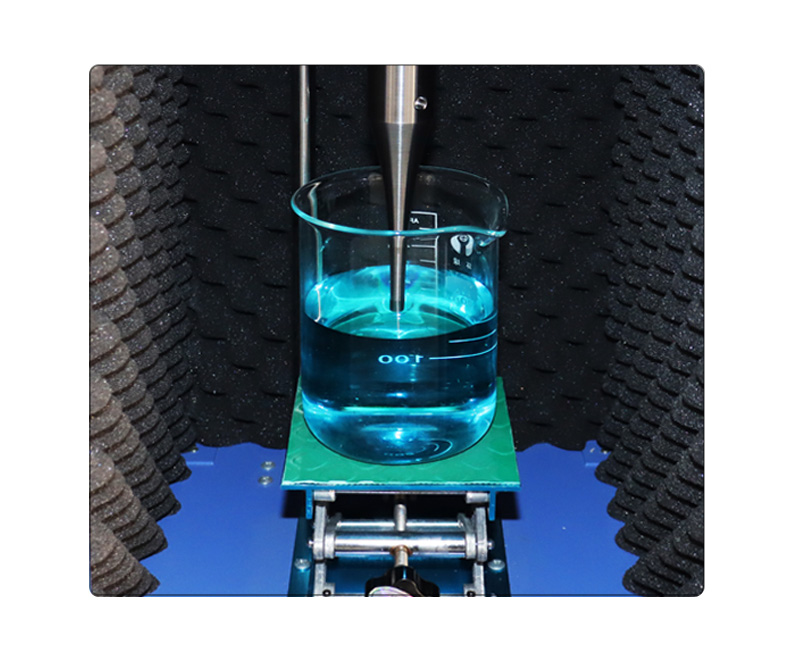超音波細胞破砕装置は、細胞溶解、タンパク質抽出、サンプルの均質化などの用途に広く用いられる実験装置です。超音波によって液体中に発生する強力なキャビテーション効果を利用し、細胞壁やその他の物質構造を効果的に破壊します。以下は、超音波細胞破砕装置を安全かつ効率的に操作するための詳細な使用手順と注意事項です。
A. 準備作業:
1. 安全保護
超音波や液体の飛沫による人体への潜在的な危害を防ぐために、保護メガネと耳栓を着用してください。
2. 設備検査
機器とすべてのコンポーネントが完全であること、特にプローブが清潔で損傷がないことを確認します。
電源と接続線をチェックして、電源が正しく接続されていることを確認します。
3. サンプルの準備
実験要件に従ってサンプルを準備し、適切な容器に入れます。サンプルの量は、粉砕効果に影響を与えないように、多すぎないようにする必要があります。
B. 操作手順:
1. プローブを取り付ける
適切なサイズのプローブを選択し、ホストにしっかりと接続します。
プローブをサンプル液に適切な深さ(通常はサンプル量の 1/2 ~ 2/3)まで挿入します。
2. パラメータを設定する
出力設定:サンプルの特性と粉砕要件に基づいて適切な超音波出力を設定します。一般的に、硬い細胞や大きな細胞を粉砕するには出力を高く設定し、穏やかな処理には出力を低く設定します。
時間設定: 長時間の連続超音波によるサンプルの過熱を避けるために、超音波時間と間隔時間 (5 秒間動作して 3 秒間停止するなど) を設定します。
温度制御: サンプルが温度に敏感な場合は、操作中に氷浴または冷却システムを使用して低温を維持することができます。
3. 操作を開始する
超音波細胞破砕機を起動し、徐々にプリセットされたパワーに調整します。
超音波処理中は、サンプルの状態を観察し、液体に明らかな気泡や激しい変動がないことを確認します。
4. 操作を終了する
設定時間に達したら超音波細胞破砕機を停止します。
プローブを慎重に取り外し、徹底的に洗浄して、適切に保管してください。
C. 注意事項:
1. 空焚きを避ける
アイドリング、空焚き、機器の損傷を防ぐため、プローブは常に液体に浸しておく必要があります。
2. 均一な扱い
局所的な過熱が実験結果に影響するのを避けるために、処理中にサンプルが均一に分散されていることを確認します。
3. 冷却対策
高出力で長時間動作させる場合は、サンプルの過熱を防ぐために、時間制限付きの一時停止や外部冷却手段を使用する必要があります。
4. 機器のメンテナンス
残留サンプルによる機器の損傷を防ぐため、使用後はすぐにプローブを洗浄してください。
機器の長期的な安定動作を確保するために、定期的に機器の性能を確認してください。
D. よくある問題と解決策:
1. 泡が多すぎる
正しいプローブの位置を確保し、気泡の形成を防ぐには、電力を下げるか、間隔時間を長くしてください。
2. サンプルの過熱
超音波の時間を短くするか、休止時間を長くし、手術中は氷浴または冷却システムを使用します。
3. プローブの損傷
定期的にプローブの状態を確認し、摩耗や損傷が見つかった場合はすぐに交換してください。
E. 要約:
超音波細胞破砕機/超音波ホモジナイザー/超音波細胞粉砕機は、科学研究室に欠かせないツールであり、その効率的で便利な操作特性により、生物学、化学、材料科学などの分野で広く使用されています。適切な操作と日常のメンテナンスを行うことで、実験効率を向上させるだけでなく、機器の寿命を延ばすことも可能です。このガイドが、超音波細胞破砕機のより効果的な使用に役立ち、科学研究を強力にサポートすることを願っています。


投稿日時: 2024年8月2日






